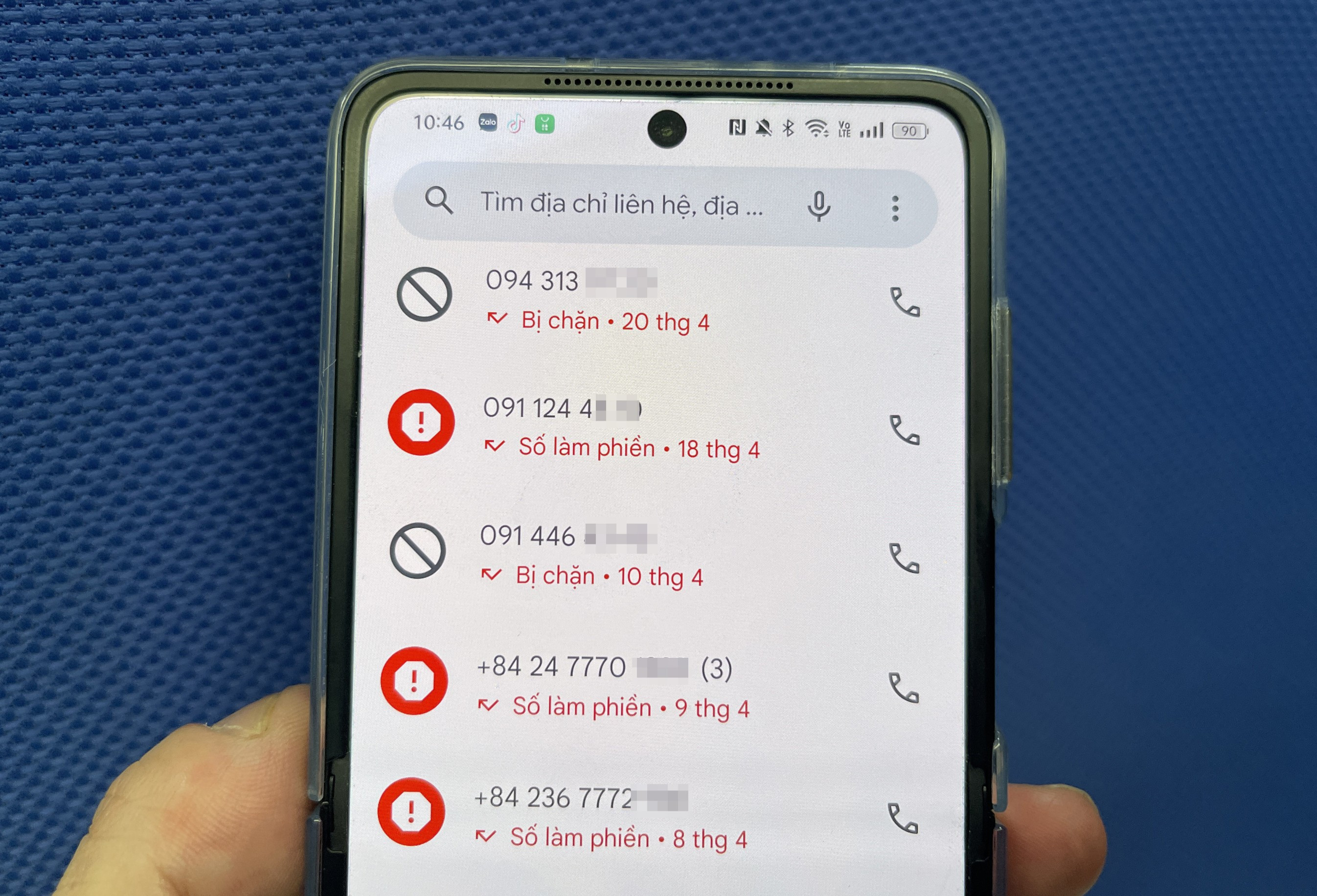
To prevent spam and scam calls, many people have installed software of a third party on their smartphones. The software is similar to a transnational social networking platform which operates under a reporting mechanism, under which users can report spam and scam calls. When calls from the numbers come, alerts are given.
The software regularly updates new phone numbers, which users can download to their phones.
However, the problem is that users have to pay a fee if they want more protection and they have to carry out operations manually when updating new phone numbers associated with ads.
It is still unclear who has created the software, and users feel insecure when using it. They fear that software may steal personal information from their smartphones.
Another solution some users apply when receiving spam calls is forwarding calls to another simcard installed on another phone. However, not everyone can do this.
Meanwhile, other mobile phone users set up groups on social networks where they share the phone numbers which regularly make spam calls.
Nevertheless, these measures are not highly effective.
Asked by VietNamNet if mobile network operators can create a solution that can prevent spam calls from the very root, a representative of Viettel said the telco receives reports and complaints about spam calls from subscribers via the Ministry of Information and Communications’ (MIC) switchboard 156 and 5656. After receiving complaints, it will apply technical measures to block the subscriber numbers.
In addition, Viettel has launched the Antispam call, using AI (Pettern Matching) and Big Data to quickly recognize subscribers spreading spam calls.
The network operator also has My Viettel, an app that allows clients to make complaints when receiving spam and scam calls. Viettel is deploying solutions on the app so that people themselves can prevent unwanted calls.
Answering the question, a representative of MobiFone said the network operator has been pursuing solutions to supervise and prevent spam calls, per instruction by MIC.
In addition, the telecom carrier has a system that automatically supervises and prevents subscribers from making spam calls (SPAMCALL system).
The solutions don’t work effectively, because these are one-way reporting mechanisms. Subscribers report problems to mobile network operators and they don’t know what telcos will do with the subjects that make spam calls.
No one knows what telcos will do if some subscribers report these spam calls, but other subscribers deny this. In many cases, users receive a lot of spam calls from various subscriber numbers, and this means that they have to make many different reports.
It will take time to use My Viettel, because users have to log in to the app to make reports, and don’t know what the telco will do with the reports they submit.
Therefore, analysts say mobile network operators need to design a more comprehensive solution to replace the current ineffective measures to prevent spam and scam calls.
They said if mobile network operators together develop a piece of software which operates under a two-way mechanism (interactions between subscribers and telcos), in an open and transparent way, this will bring higher efficiency than the current methods, and help solve the problem to the root.
The advantages of this solution are as follows:
First, as the software is designed by telcos, people will feel secure installing it on their mobile phones and will worry less about digital security.
Second, with the two-way mechanism, information about how to deal with spam and scam calls will be transparent, and people will feel secure cooperating with telcos as they are sure that their reports will be handled.
Third, with the solution, telcos cannot be arbitrary in blocking subscribers, and users have the right to decide whether or not to receive calls from certain subscribers.
Le My